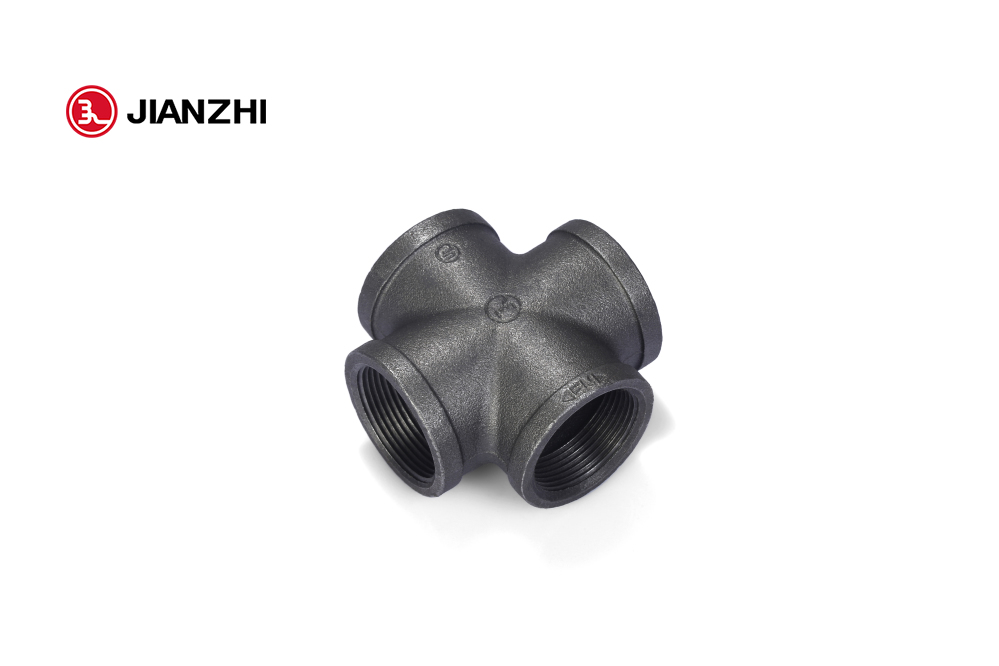Black pipe connections typically refer to the connections made with black steel pipe, which is a type of pipe commonly used for gas, oil, and water applications. Black steel pipe is named for its dark, black-colored exterior, which is a result of a protective layer of black oxide coating applied to the steel to prevent rust and corrosion.
There are several common methods for connecting black steel pipes:
Threaded Connections: Threaded connections involve using threaded fittings, such as couplings, elbows, tees, and unions, that have male or female threads. Tapered threads are cut into the ends of the pipes, and the fittings can be tightened onto the pipe ends to create a secure connection. Threaded connections are typically used for low-pressure applications and can be disassembled and reassembled easily.
Welded Connections: Welded connections involve permanently joining the pipes using welding techniques. This can be done through methods like butt welding, where the ends of the pipes are beveled, aligned, and then welded together. Welded connections provide a strong and leak-resistant joint, making them suitable for high-pressure and high-temperature applications.
Flanged Connections: Flanged connections involve using flanges, which are flat, disc-like fittings with bolt holes, to connect pipes. The flanges are bolted together with gaskets in between, creating a secure and sealed connection. Flanged connections are commonly used in applications that require easy disassembly or where frequent maintenance is required.
Compression Fittings: Compression fittings are another option for connecting black steel pipes. These fittings consist of a compression nut, ferrule, and body. The compression nut is tightened onto the pipe, compressing the ferrule against the body and creating a tight seal. black pipe connections Compression fittings are often used for smaller pipe sizes and lower-pressure applications.
It’s important to choose the appropriate connection method based on the specific application requirements, including factors such as pressure, temperature, fluid type, and compatibility with the pipes and equipment being used. Following industry standards and guidelines is crucial to ensure proper installation and performance of the piping system.
Here are some additional details about black pipe connections:
Threaded Connections: Threaded connections are commonly used with black steel pipe. The pipe ends are threaded with either male or female threads, and threaded fittings are used to create the connection. The threads on the pipe and fittings are tapered, which helps create a tight seal when they are screwed together. Threaded connections are relatively easy to assemble and disassemble, making them suitable for applications that may require maintenance or modifications.
Welded Connections: Welded connections provide a strong and permanent joint between black steel pipes. Various welding techniques can be used, such as butt welding, where the ends of the pipes are beveled and welded together. Welded connections are commonly used in high-pressure and high-temperature applications where a secure and leak-proof joint is required. The welding process requires skill and expertise to ensure proper penetration and integrity of the joint.
Flanged Connections: Flanged connections involve the use of flanges, which are flat, disc-like fittings with bolt holes. The pipe ends are attached to the flanges, and the flanges are then bolted together with gaskets in between. This method provides a strong and reliable connection that can withstand high pressures. Flanged connections are commonly used in industrial applications where easy disassembly and maintenance are important, as the bolts can be removed to separate the flanges.
Compression Fittings: Compression fittings provide a secure connection without the need for threading or welding. They consist of a compression nut, ferrule, and body. The nut is tightened onto the pipe, compressing the ferrule against the body and creating a tight seal. Compression fittings are commonly used for smaller pipe sizes and lower-pressure applications, such as in residential or light commercial plumbing systems.
Grooved Connections: Grooved connections involve using grooved-end pipe and fittings that have grooves machined into them. The grooves are aligned and secured using mechanical couplings, which are tightened with bolts and nuts. Grooved connections offer a quick and easy installation method, and they allow for some flexibility and movement within the system.
When selecting the appropriate connection method, it’s important to consider factors such as the application requirements, system pressure, temperature, fluid type, and compatibility with the pipes and equipment being used. Additionally, following industry standards, codes, and guidelines for proper installation and safety is essential to ensure reliable and leak-free connections in the piping system.
